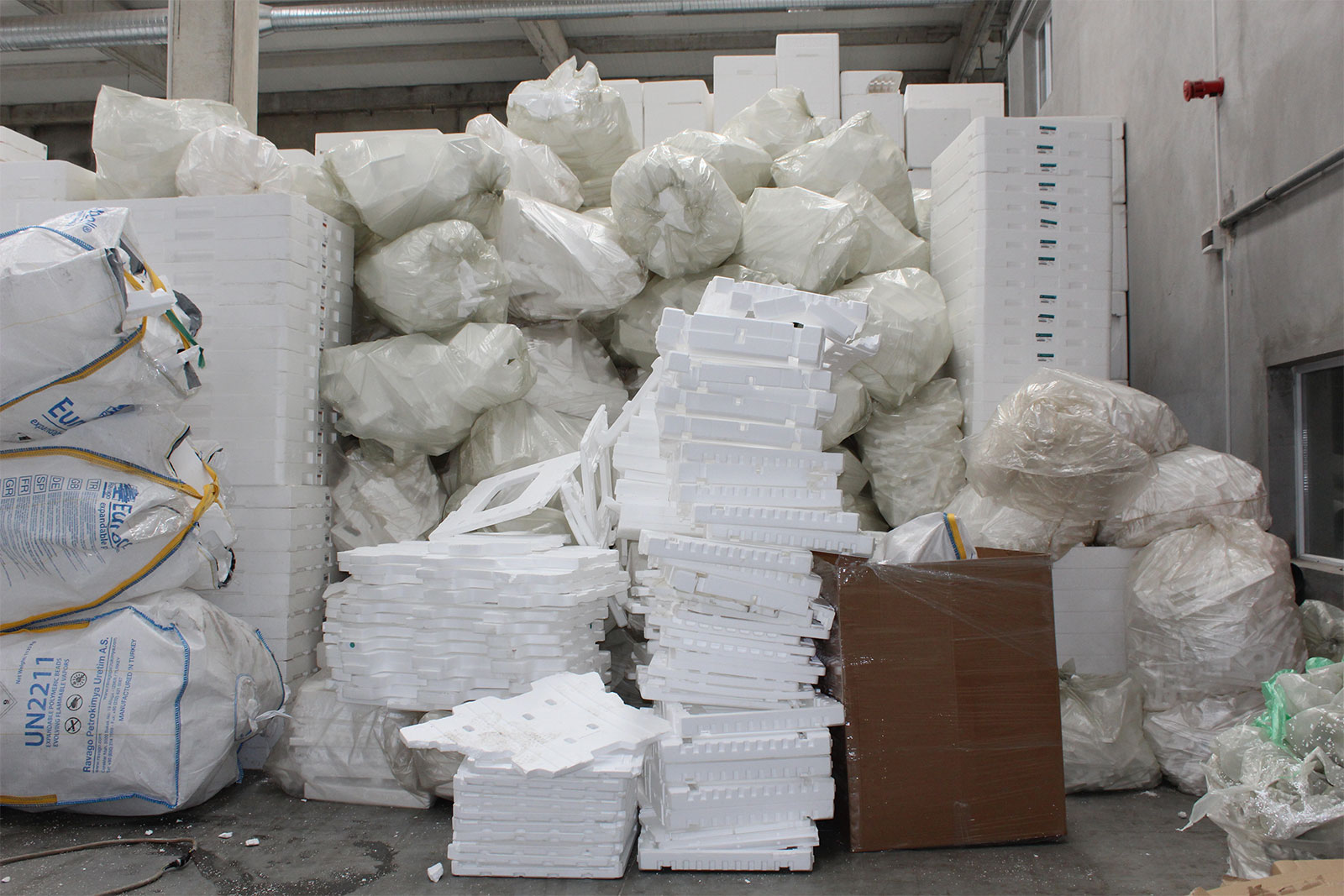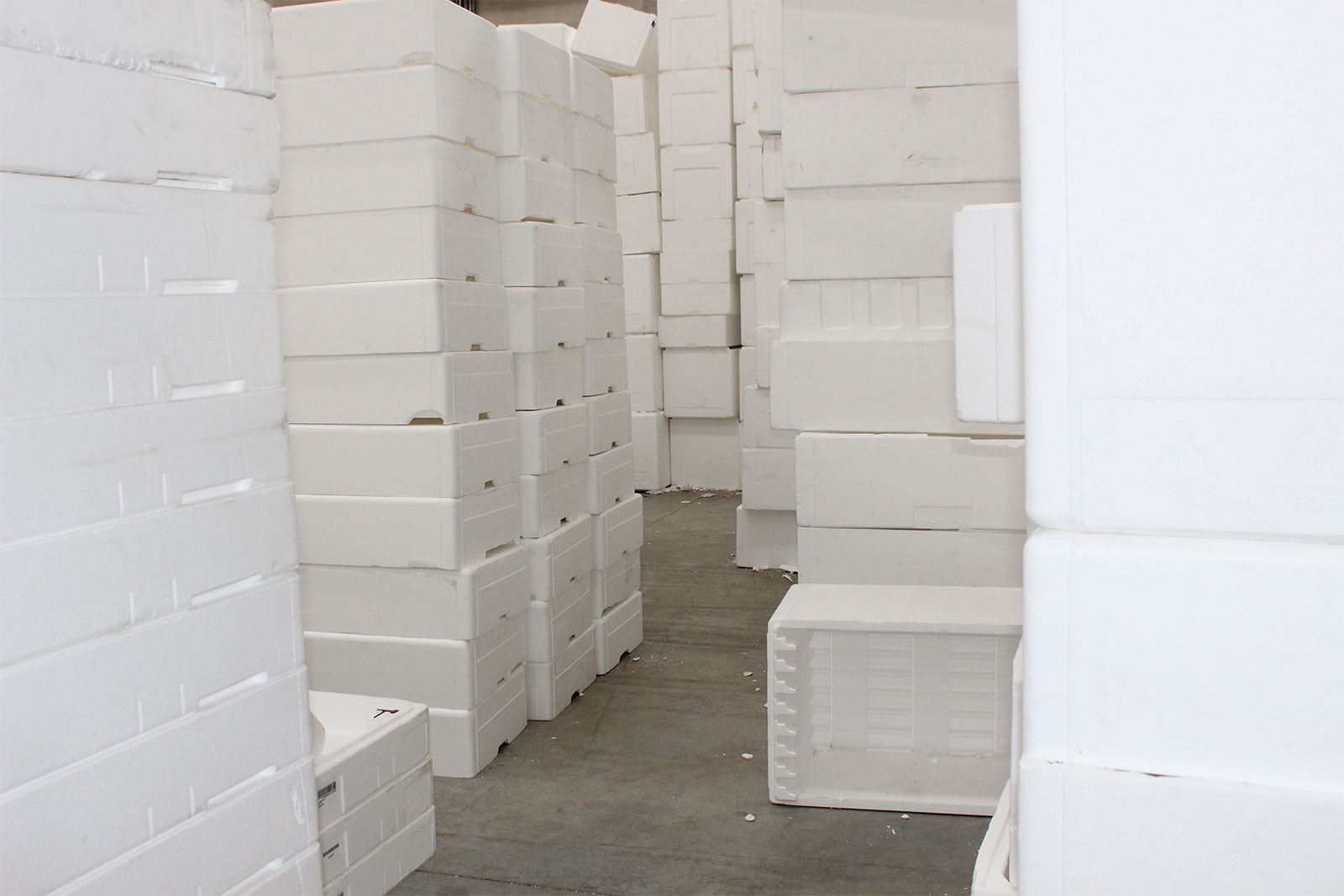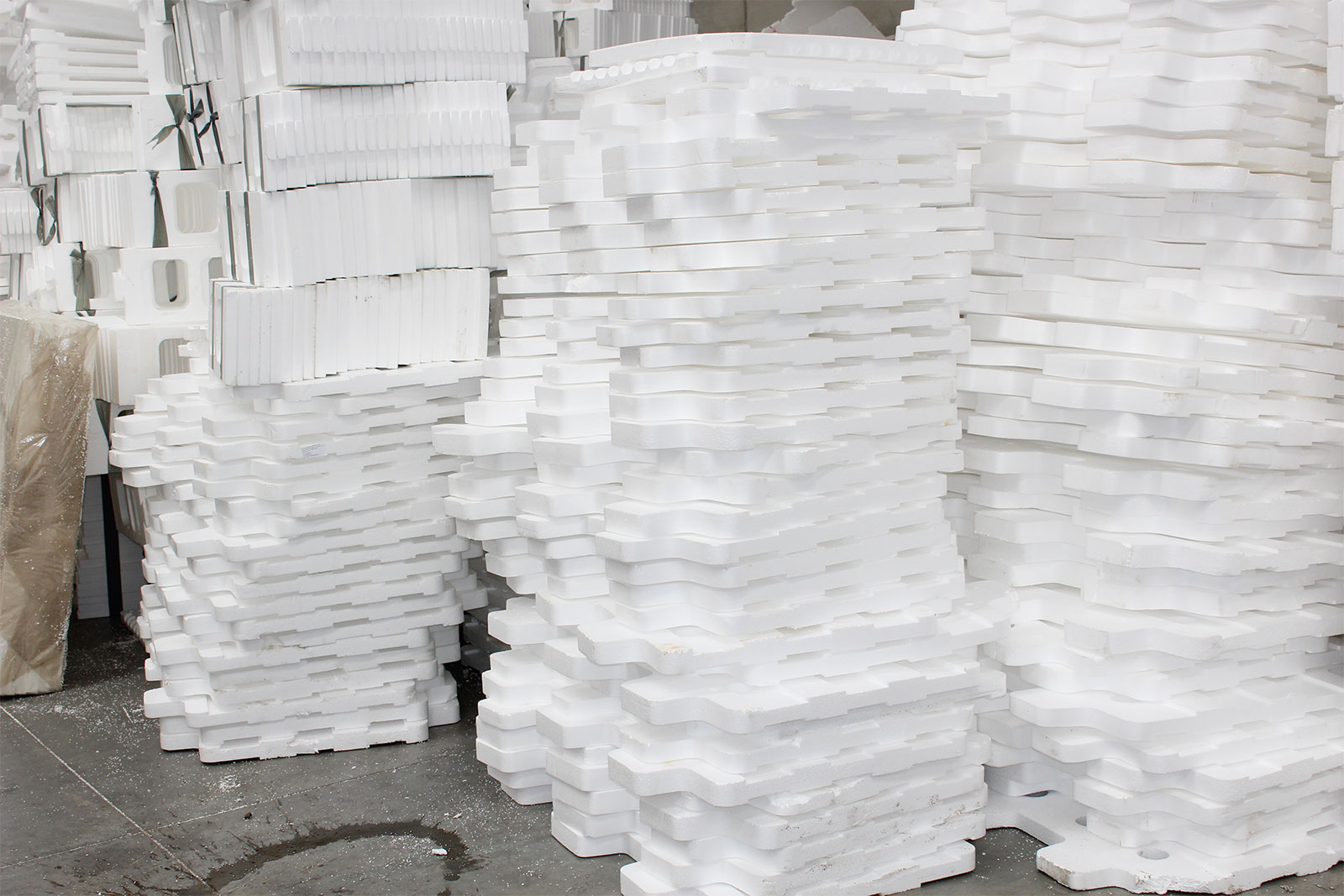Foam Recycling
Foam is expanded polystyrene foam or EPS. This material is made of polystyrene, a plastic that is often used to make transparent products such as food packaging or laboratory equipment. Polystyrene can be used to make various parts of cars, toys, tools, and more by combining it with dyes, additives, or various plastics. EPS is mainly composed of air. At this time, we can say that about 95% of it is air.
How is foam recycled?
When Styrofoam is recycled, the collected expanded polystyrene (EPS) foam is fed via conveyor belts to a machine that first crushes the material. Foam thickeners transfer material to a plastic extruder, where the foam is subjected to heat and pressure to melt into a paste. This condensed foam is extruded from a small outlet of the machine and solidifies into what is called an ingot as it cools. This melting reduces by 1/90, increasing the original volume and emission most efficiently.
Compressors take the crushed material and compress the foam into dense blocks. This process reduces the volume of the foam to 1/50th of its original volume and turns the Styrofoam into smooth and dense blocks. Although it is not the most efficient, compressing the foam with this method allows easy transportation of the material. Another method is to use a liquid hydrocarbon known as limonene, which can be extracted from citrus fruits, to dissolve the foam. The foam recycling process is used as an environmentally friendly foam recycling process. These EPS formats can then be easily transported to the required factories to be reused in new EPS products. Our company produces foam thickener using the safest and most efficient polystyrene recycling method.
Advantages of foam recycling
An interesting use of recycled EPS is a product that looks like wood and can be used for park benches and fence posts. The material is cheaper than hardwood and can be used as a substitute for mahogany and teak from the rainforest. The production of polystyrene requires oil, a non-renewable resource. Recycling polystyrene therefore reduces the amount of oil required for the manufacturing process. Of course, this is not a pure gain, as some energy must still be used to move and rework the material.
The most important benefit of polystyrene recycling is the reduction of waste on land and at sea. EPS that is not affected by oxygen, sunlight or water will remain indefinitely. Municipalities have to spend money on cleanup. Polystyrene takes up space in landfills, where it will remain for hundreds of years. The industry argues that this is not a real disadvantage because modern landfills are insulated from moisture and light and are not designed to promote biodegradation. Even organic material does not crumble when it reaches the landfill.
Polystyrene is also a threat to marine life. As it wears away over time, EPS breaks down into small particles that look like food to fish and can be eaten. Foam clogs the digestive systems of marine animals and kills them. EPS makes up an estimated 60 to 80 percent of marine debris, according to a 2008 review of environmental research. Recycling can help reduce the amount at sea. Recycling consumer polystyrene also prevents the material from burning in backyard fires or barrels. Polystyrene can produce toxic chemicals when burned if efficient incinerators are not used.









